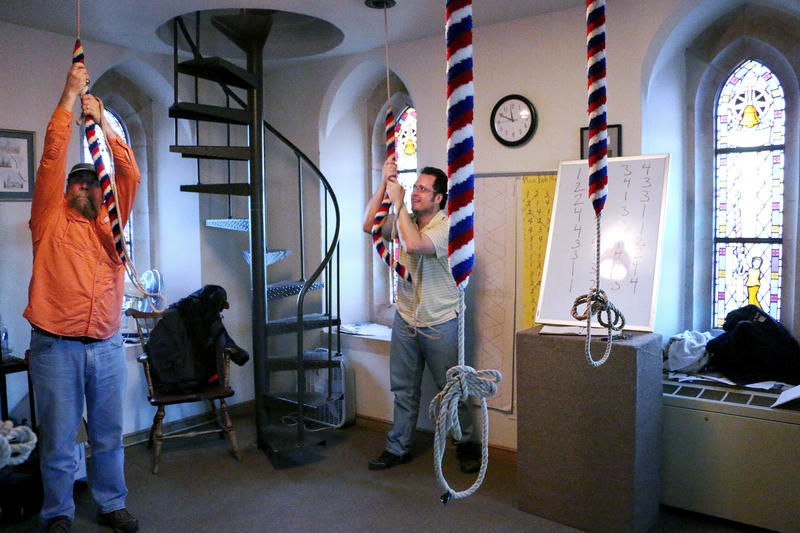

The brothers did not have a “plan” exactly. The bell was originally part of an old schoolhouse in Arkansas. In 1956, Wayne and Harry Bath, both veterans, bought a 500-pound bell off a guy in Estes Park. In 1954, Armistice Day became Veterans Day, but the routine of rousing individuals out of their slumber remained the same. Yet another tactic involved getting the switchboard operators (remember those?) to call all the vets at 4 a.m. Most of the guys chose to avoid the harsh awakening by being at the ready, standing on their porch. In 1944, another feature was added the “bomb squad.” If for some reason the clamor of the bell did not stir you from your dreams, the squad would enter your domicile and jerk your weary bones from their cot.
Texas tech bell ringer portable#
The vets opted to rouse their countrymen with a portable church bell as well as a firetruck employed as chariot to transport the troops to the annual breakfast. The tradition of playing reveille on Fourth Street actually ended in 1932 and the ringing of bells began. The flagpole came down in 1937 by order of the Colorado State Highway Department when it was decided that Lincoln Avenue needed to be widened. From 1919 to 1930, ex-servicemen would meet at the flagpole on Fourth Street to animate the townsfolk with reveille played obstreperously on bugles. All the participants “rode in cars owing to the weather and the sloppy streets, with the exception of the soldiers of World War I who marched on foot and showed they had not lost their endurance by any means.”įor the next 35 years, the town would celebrate Armistice Day with events such as races, a tug-of-war between business owners, the BIG football game, and of course, a parade.

In the morning, an enthusiastic crowd cheered as a company of 92 men from the Great War, the Spanish-American War and the Civil War passed by during the parade.

One year later, on the first anniversary of the armistice, the celebration got underway the night prior, with shots fired into the sky. the next day, a parade had been organized. Every noise-producing instrument that could be raked up in the city was soon in evidence.” By 1:30 p.m. Crowds gathered downtown and a bonfire was made at Fourth Street and Lincoln Avenue. and the town was “mad with joy.” Within minutes, according to press accounts, “church bells were ringing, shots were fired into the air and whistles blew to pass the word along. Twenty three days later, under a waxing moon, Loveland got word of an armistice. Loveland raised $381,000 for the campaign, exceeding its goal by $89,000. A dedication ceremony took place the second week in October of that year, a celebration of Loveland’s success in the Liberty Loan campaign. It was a 50-foot reminder that the residents of Loveland bought their share of war bonds. In 1918, the town erected a pole in the middle of the intersection Fourth Street and Cleveland Avenue to fly Old Glory. But before I talk about that, I have to make mention of Loveland’s long-lost flagpole. Before I can talk about Loveland’s famous Veterans Day “Bell Ringers,” I have to talk to about Armistice Day.


 0 kommentar(er)
0 kommentar(er)
